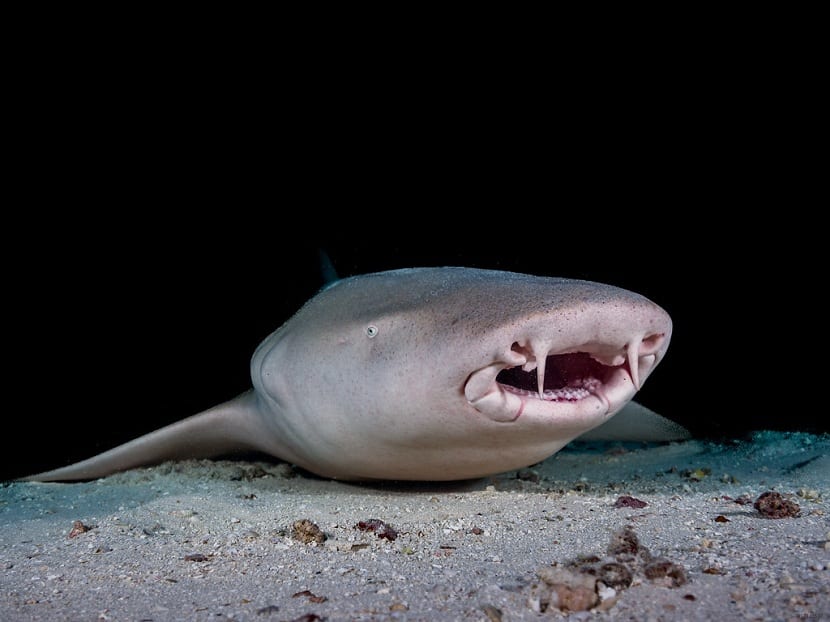
Today we are going to talk about a shark that is harmless to people despite its appearance. Its about nurse shark. His scientific name is Ginglymostoma cirratum and it is a fairly quiet species. It is part of the Ginglymostomatidae family, in which the specimens are found in the depths of the seas where the light is much scarcer and the living conditions are harsher. The most curious thing about this animal is that it has a smaller mouth than the rest of the sharks.
In this article we are going to tell all the biology, behavior, feeding and reproduction of the nurse shark.
Key features
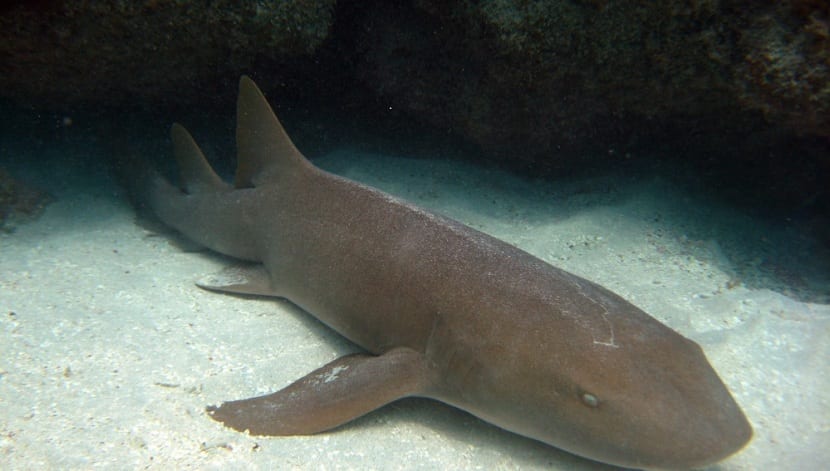
The nurse shark is about four meters long. It is an animal that has nocturnal habits and normally rest on the seabed in good caves during the day. The moment in which it feeds is at night when it goes out to hunt. Unlike common sharks, the nurse shark has a much smaller mouth. They are dark in color more or less uniform and some specimens have splashes.
In general, it can be seen that it is relatively plump. As we have mentioned before, it is a fairly harmless animal despite its appearance. However, it can attack if it feels provoked by an animal or human being. When they bite, they use their jaws to close them tightly and have to be forced very hard to reopen. If you want to try to extract something that the nurse shark was eating is an impossible task.
What it does have in common with the rest of the sharks is that it has gill slits that are uncovered and do not have a swim bladder. This fact is compensated by having a high buoyancy in your liver. This liver is inordinately large and very rich in oil.
Range and habitat
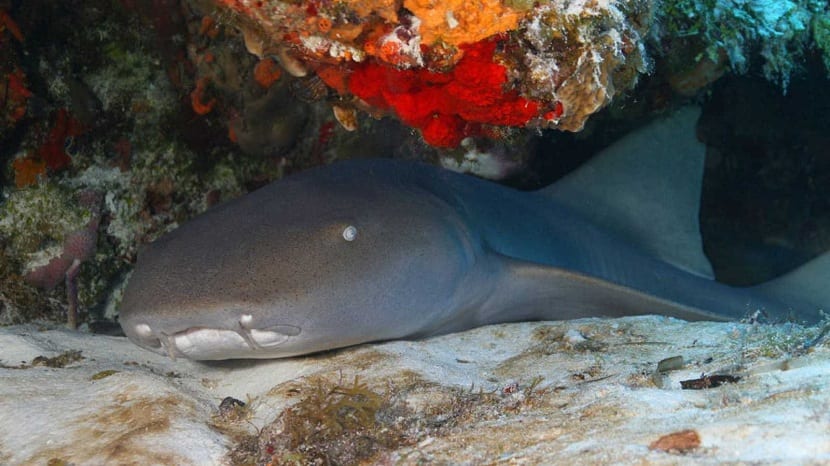
The nurse shark has a range that is found in tropical seas. A sign that these places are his favorites is that they have a high presence on the coasts of Central America. Not for this reason, their area of distribution is closed in these places, but they also extend to more northern territories such as New York. Where there are more nurse sharks in the world is around the American continent in both the Pacific and Atlantic oceans.
Regarding its habitat We can find it at a depth of 70 meters and on sandy and muddy terrain.
Behavior
Even though it looks intimidating, the nurse shark is not aggressive at all unless it feels threatened or invades its habitat. For example, there have been some cases where his mouth has been hermetically closed and in order to open it, titanium tweezers have been used and he has used a lot of force. They are harmless because in some aquariums some specimens have been used so that visitors can ride on them. The tendency they have in behavior is quite apathetic.
Feeding and reproduction of the nurse shark
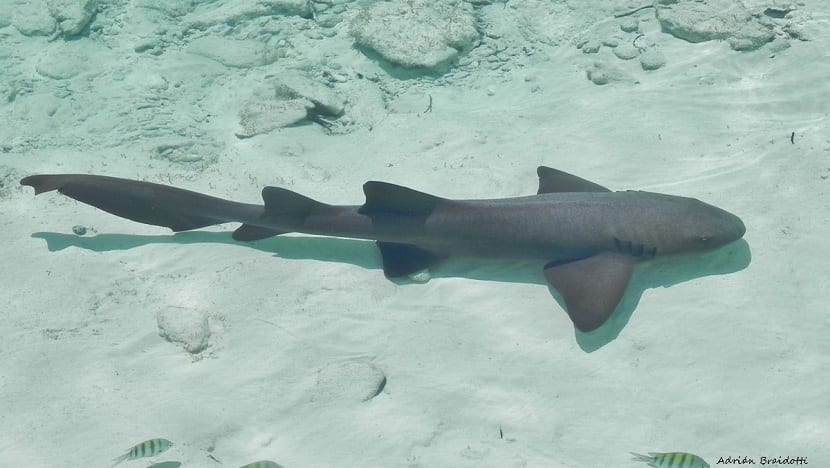
Surely many wonder how these sharks can feed if their mouth is smaller than the rest. To alleviate this situation, the shark uses a feeding method that consists of sucking the crustaceans and mollusks to later crush them with its curved and sharp teeth. These mollusks and crustaceans make up the majority of the nurse shark's diet.
They can also feed on some cucumbers and oysters they find while drifting at night.
Regarding its reproduction, it is the same as that of the rest of the shark species. Their mating and their fertilization is internal. In this case we have an ovoviviparous reproduction. That is, the females are able to retain the eggs inside and the embryos feed themselves with each of the nutrients that the mother can provide.
For the act of mating to take place they must be carried out in shallow waters. In each laying they are capable of generating between 21 and 28 young. From the moment the young are separated from their mother, they must be totally independent. Learning to forage on your own is vitally important if you want to develop and survive in good conditions. It is not uncommon for the first few days after birth to see wild cannibalistic behavior to quench their growing hunger and bloodlust.
Nurse shark curiosities
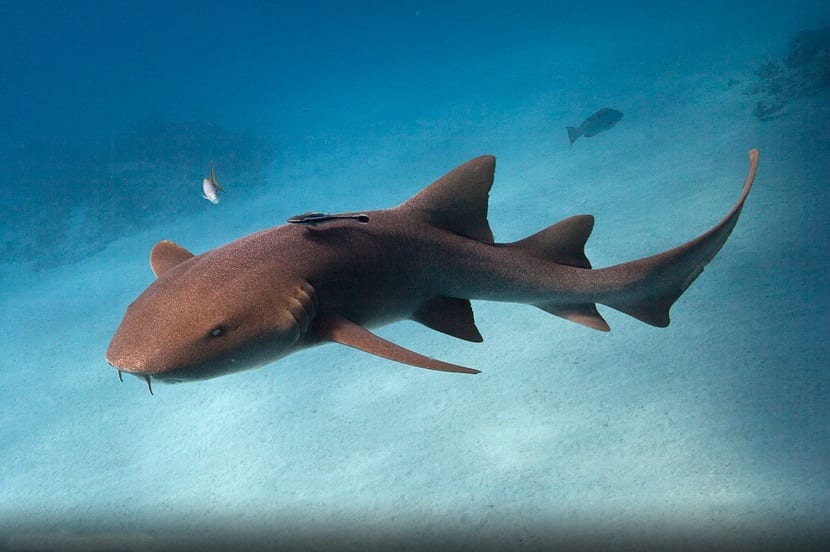
Among the curiosities that this shark has, we can see that, although it is a very peaceful and harmless animal, it is extremely territorial. It is capable of living in a certain area for up to four years. Sometimes it can be seen to act violently towards other species or even other people who approach the territory where they live. Once he loved her, she was born, if she does not move away from her mother by herself within a maximum period of a week, it will probably be the mother herself who ends up eating it.
They are capable of feeling the blood of other animals from more than five kilometers away. Depending on the type of ocean current at the time, this distance can be even greater.
Being a harmless species for humans, it is classified as threatened. The number of sharks that are illegally hunted due to this tameness is enormous. A special case that took place on June 15, 2009 caused animal rights defense associations to be scandalized by it. In this case, there was a shipment of 20 containers of twelve meters long each that left the Yucatan port bound for Spain. This shipment was stopped by police and found to be filled with frozen nurse sharks inside. The worst of all, is that inside the frozen nurse sharks there were about 200 kg of cocaine.
Experts say that the great hunting of these animals can cause serious problems in marine ecosystems. This is due to the impacts that the captured animals produce in the food chain.
I hope that with this information you can learn more about the nurse shark.